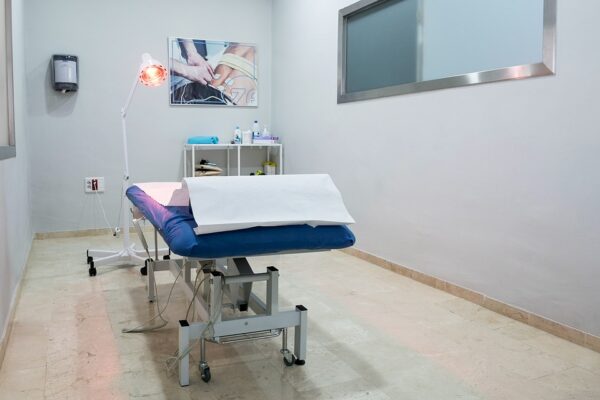Padel: Common Injuries and How to Avoid Them
Padel is one of the fastest-growing sports in the UK and in London. It is a fun, social and very active game. It's a racquet sport similar to tennis but played on a smaller enclosed court, and is played in doubles. Think squash meets, bat and ball, meets mini-tennis!
While it's generally low-impact and accessible for all ages, Padel still carries a risk of injury as it involves a lot of stopping/starting and changing directions, shoulder reaching, and impact with the ball.
Understanding the most common injuries and how to prevent them can help players really enjoy their game without fear of injury.

Some Common Padel Injuries
1. Tennis Elbow (Lateral Epicondylitis)
Despite its name, tennis elbow is common in many racquet sports, including padel. This happens due to holding the racquet in your hand, causing your forearm/wrist muscles to work hard. This then puts strain on their insertion into your elbow.
How to Prevent this:
- Strengthen forearm muscles with resistance exercises.
- Use proper technique and avoid excessive wrist movement during shots.
- Try to choose a racquet with the right grip size and weight to reduce strain on the tendons.
- Do a warm-up before playing
- Slowly increase your amount of time playing Padel. Don't go from zero to hero!
2. Rotator Cuff Shoulder Pain
Padel uses the shoulder a lot, especially with overhead shots and far reaches to get the ball in the corners. This can cause a rotator cuff injury or even a tear of the rotator cuff muscles.
How to prevent injury:
- Do some rotator cuff/shoulder strengthening exercises with resistance bands or light weights.
- Improve flexibility with shoulder stretches and upper back mobility exercises.
- Avoid overuse by not doing too much, too soon.
- Work on your technique and how you hit the ball to avoid overstraining your shoulder.
3. Ankle Sprains
The fast change of direction and stop/start in Padel can lead to ankle injuries, causing an ankle sprain. An ankle sprain is a tear of the ligaments that give your ankle stability.
How to prevent an ankle sprain:
- Make sure you are wearing the right shoes for Padel. Shoes that are stable, with a good grip.
- You can strengthen your ankles with balance exercises such as hopping, single-leg balance exercises and single-leg strength exercises such as step-ups, lunges and single-leg squats.
- If you warm up with dynamic stretches, like leg swinging and ankle circles this can help to prevent ankle injuries.
4. Knee Injuries
Padel is a game that involves a lot of twisting, running, lunging and changes of direction. These movements can put strain on your knee, especially on the front of your knee. The muscles around your knee are causing anterior knee pain or a meniscus strain.
How to prevent injury:
- You can strengthen the muscles that support your knee, like the quadriceps and hamstrings.
- Avoid playing too many times in a week.
5. Lower Back Pain
Repetitive twisting and sudden movements can strain the lower back muscles or contribute to disc-related problems.
How to prevent injury:
- Strengthen core muscles and glute muscles to stabilise the spine.
- Stretch the lower back, glutes, hamstrings, and hip flexors regularly. A physiotherapist can help you with a good stretching and mobility program for your back and legs.
- Take breaks if experiencing discomfort.
How to Prevent Injury
1. Don't play every day when you first start
Padel is a really fun and addictive game and the temptation is to play a few times a week when you first get going. But if you play too often, your body might not be ready, and this can lead to injury.
2. A warm-up before you play can help to prevent injury
A proper warm-up helps your body to get ready to play and can improve blood flow, which can prevent injury.
You can try things like:
- Light jogging or jumping for a few minutes before you play.
- Doing dynamic stretches like leg swings, arm swings and ankle circles before you play.
3. Strengthening
By strengthening the specific muscles that work in Padel, you can help to prevent injury. The main target areas to focus strength on would be:
- Squats and lunges will help to build leg and glute strength.
- Shoulder strength by using light weights or resistance band exercises for rotator cuff strength.
4. Proper Footwear
- Use padel-specific shoes that have a good grip to prevent slips and ankle injuries.
5. Listen to Your Body and Rest
It is best to slowly increase the amount of time that you play Padel, as fun as it is. This will help to prevent overuse injuries.
If you are having niggles that won't go away, see a physiotherapist. If you live in South West London, Prophysiotherapy has experienced physios who can help to assess and diagnose any injuries and get you back on the court as soon as possible.
How a Physiotherapist Can Help
If you're experiencing persistent pain or discomfort while playing padel, a physiotherapist can provide the expert support you need. At Prophysiotherapy, all our physiotherapists are experienced in treating all sports injuries.
Your physio will:
- Assess your injury to see where the root cause is coming from
- Provide hands-on treatments like soft tissue massage and joint mobilisation
- They will work with you on a specific rehab program for you
- They will help you return to Padel at the right time to prevent any reinjury
It's best not to ignore that little niggle. If you leave small injuries, in time they can become worse and take much longer to heal.
Our physios at Prophysiotherapy in Earlsfield are all experienced and can help to diagnose your injury and get you back on the court as soon as possible.


